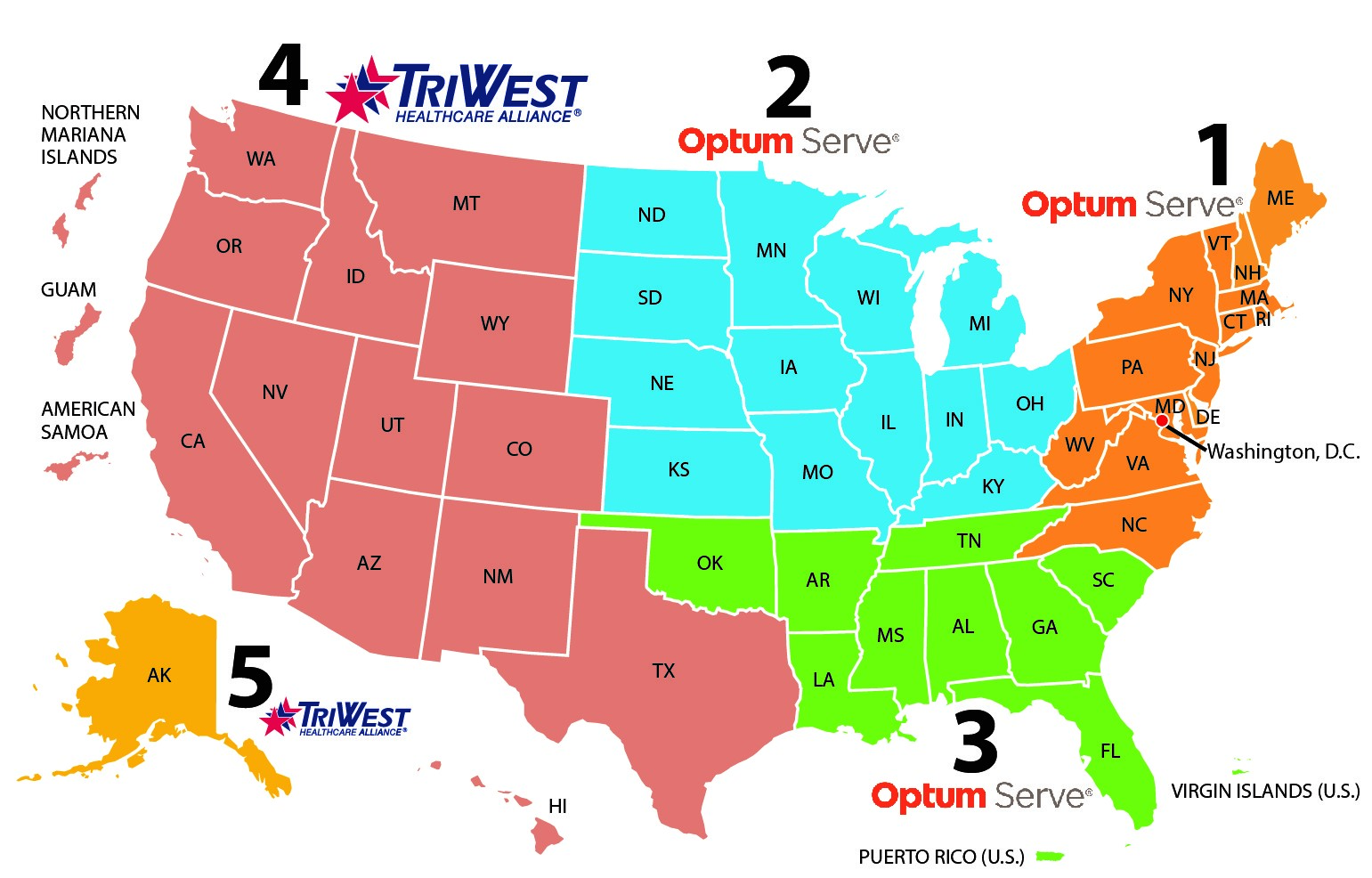Attention A T users. To access the menus on this page please perform the following steps.
1. Please switch auto forms mode to off.
2. Hit enter to expand a main menu option (Health, Benefits, etc).
3. To enter and activate the submenu links, hit the down arrow.
You will now be able to tab or arrow up or down through the submenu options to access/activate the submenu links.
Locator
Contact
Search
VA »
Office of Procurement, Acquisition and Logistics (OPAL)
»
Strategic Acquisition Center (SAC) »
The VA Community Care Network (CCN)
Office of Procurement, Acquisition and Logistics (OPAL)
The VA Community Care Network (CCN)
On the page:
Community Care Network - Current Contracts | Next Generation
The VA Community Care Network (CCN) is comprised of five regional networks that serve as the contract vehicle for VA to purchase care for Veterans from community providers.
- Region 1: Connecticut, Delaware, District of Columbia, Maine, Maryland, Massachusetts, New Hampshire, New Jersey, New York, North Carolina, Pennsylvania, Rhode Island, Vermont, Virginia, West Virginia
- Region 2: Illinois, Indiana, Iowa, Kansas, Kentucky, Michigan, Minnesota, Missouri, Nebraska, North Dakota, Ohio, South Dakota, Wisconsin
- Region 3: Alabama, Arkansas, Florida, Georgia, Louisiana, Mississippi, Oklahoma, Puerto Rico, South Carolina, Tennessee, Virgin Islands (U.S.)
- Region 4: American Samoa, Arizona, California, Colorado, Guam, Hawaii, Idaho, Montana, New Mexico, Nevada, Northern Mariana, Islands, Oregon, Texas, Utah, Washington, Wyoming
- Region 5: Alaska
Community Care Network - Current Contracts
Community Care Network—Legacy Contracts
The legacy contracts are the VA’s current contracts for delivering healthcare services from community providers to Veterans. It provides Veterans greater choice and accessibility to care outside of VA medical facilities. It is designed to improve care coordination over the current programs through expanded healthcare services, better customer service, enhanced accountability, more direct health information exchange between the VA and providers, and improved referrals, scheduling and provider payments. The Program is the preferred method of obtaining community care for Veterans.
Health care services provided as part of the legacy program include licensed healthcare providers and healthcare practitioners that provide medical, behavioral health, surgical, complementary and integrative health services (CIHS), and dental services for Veterans who are unable to receive care at a local VA medical facility. Additionally, durable medical equipment (DME) and prescription medications (up to a 14-day supply) will be provided for immediate needs through two Third Party Administrators (TPA).
The program expands coverage for additional services to include dialysis, comprehensive rehabilitation, residential care, home-health care, hospice care, dental, immunizations, and long-term acute care. Under the program, VA also covers CIHS benefits in the areas of biofeedback, hypnotherapy, massage therapy, Native American healing, relaxation techniques, and tai chi.
Visit the Community Care website for more information
Community Care Network Program Office
The Office of Integrated Veterans Care (IVC) is a central authority for collaborating with all stakeholders influencing Veterans’ access to care. It was established by the VA in June 2020 to integrate all access-related functions, including financial elements, into one office. The VHA Office of Community Care (OCC) is combining with the Office of Veteran Access to Care (OVAC) to become the new VHA Office of Integrated Veteran Care (IVC).
IVC brings together two existing VHA offices: OVAC and OCC. Together, IVC will support a single access model to deliver care to Veterans in VA or community facilities. IVC is designed to create a more seamless and coordinated experience for Veterans who access health care at VA or in the community.
IVC also manages all national billing and collection activities for medical care and services provided by VA medical centers. These activities primarily include billing Veteran copayments and third-party health insurance companies for nonservice-connected care provided to Veterans. Funds generated from these operations are returned back to VA medical centers to assist them with providing health care services to the Veterans.
Community Care Network Contracts and Contacts
VA’s Strategic Acquisition Center (SAC) is the acquisition hub for the program. The SAC Acquisition Services 6 Directorate administers the legacy contracts and is developing the strategy for the Next Generation contracts.
- Acquisition Service Directorate 6 (AS6) Director—Laura Scott
- Region 1 Division Chief—Jacqueline Boudreaux
Contract: 36C79119D0004 - Region 2 Division Chief—Jessica Portillo
Contract: 36C79119D0005 - Region 3 Division Chief—Joy Garrett-Bey
Contract: 36C79119D0006 - Region 4 Division Chief—Dr. Tamela Grandberry
Contract: 36C10G19D0038 - Region 5 Division Chief—Gary Basile
Contract: 36C10G21D0001
Community Care Network Legacy Third Party Administrator (TPA)
- OPTUM
3237 Airport Rd
La Crosse Wisconsin 54603
Contact: Phyllis Turney
Tel: (571) 262-2251
Coverage: Region 1, 2, 3 - TriWest Healthcare Alliance
P.O. Box 42049
Phoenix, AZ 85080-2049
Contact: Carl Ward
Tel: (757) 810-6768
Coverage: Region 4, 5
Community Care Network Next Generation
VA is currently in its market research phase of its acquisition planning schedule for the Community Care Network Next Generation program.
While the program has sought to address expanding Veteran healthcare requirements and needed improvements, VA’s Office of Integrated Veteran Care (IVC) plans to further streamline and enhance community care processes and services through the CCN Next Generation contract initiative.
Community Care Network Next Generation looks to build upon lessons learned and implement industry best practices through extensive market research, innovative acquisition strategies, and review and analysis of acquisition and contract requirements.
The most recent industry contact was RFI Amendment 6 issued on February 27, 2024, and closed on March 22, 2024.
Visit SAM.gov for future industry opportunities to engage with the development of the next generation contract.
Please send general inquiries on Communicaty Care Network Next Generation to SACCCNNextGenInquiries@va.gov.
*Note: You may need to visit the VA Viewer Software page to view these documents.
Disclaimer
This page may include links to other websites outside our control and jurisdiction. VA is not responsible for the privacy practices or the content of non-VA websites. We encourage you to review the privacy policy or terms and conditions of those sites to fully understand what information is collected and how it is used.






























